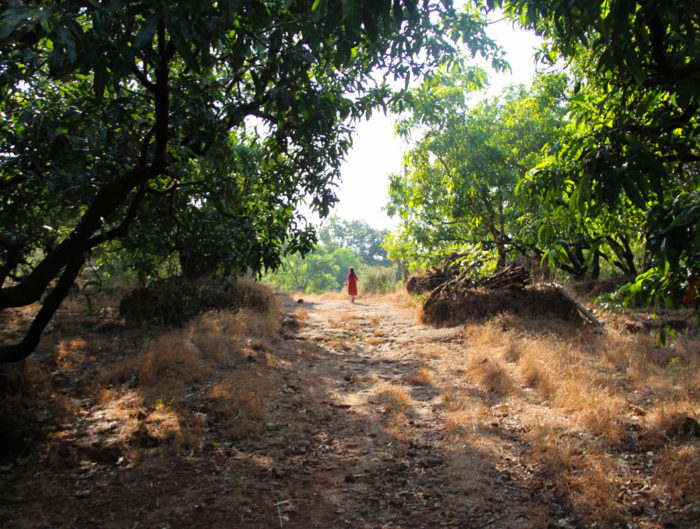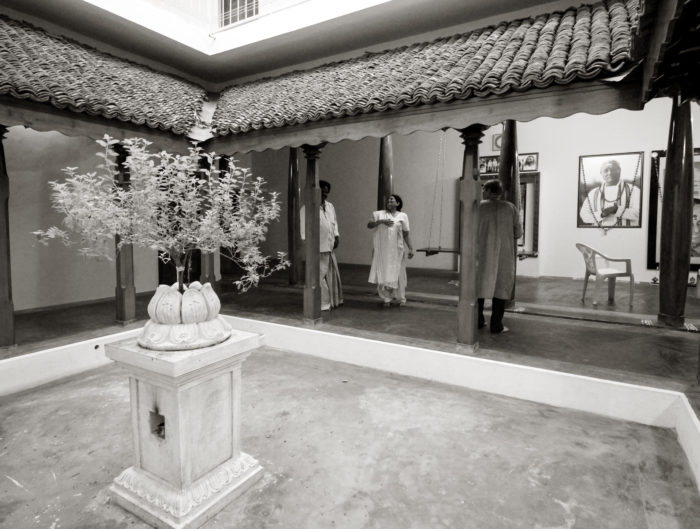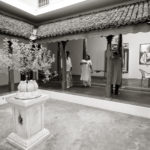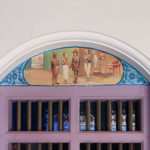“Chettinad itself is not a place”, Ramu explained. “It is a region comprised of about 75 small villages where the Nagarthar or the Nattukottai Chettiar settled over a century ago with their large families in prolific, pompous mansions”. Ramanathan or Ramu, as he likes to be called, is a local Chettiar himself and knows the place and the associated lore like the back of his hand. He had brought us for a visit to the Laxmi House aka Periya Veedu (Big House) in Athangudi, which is one of the many Chettiar mansions in the region.
It takes a moment for your vision to get accustomed to the time tinged darkness of the interiors. In contrast to the arid and stark landscape of the Chettinad, the coolness of the old structure is very welcoming. Once you are able to see clearly, an intricate collage of architectural styles and materials emerges.
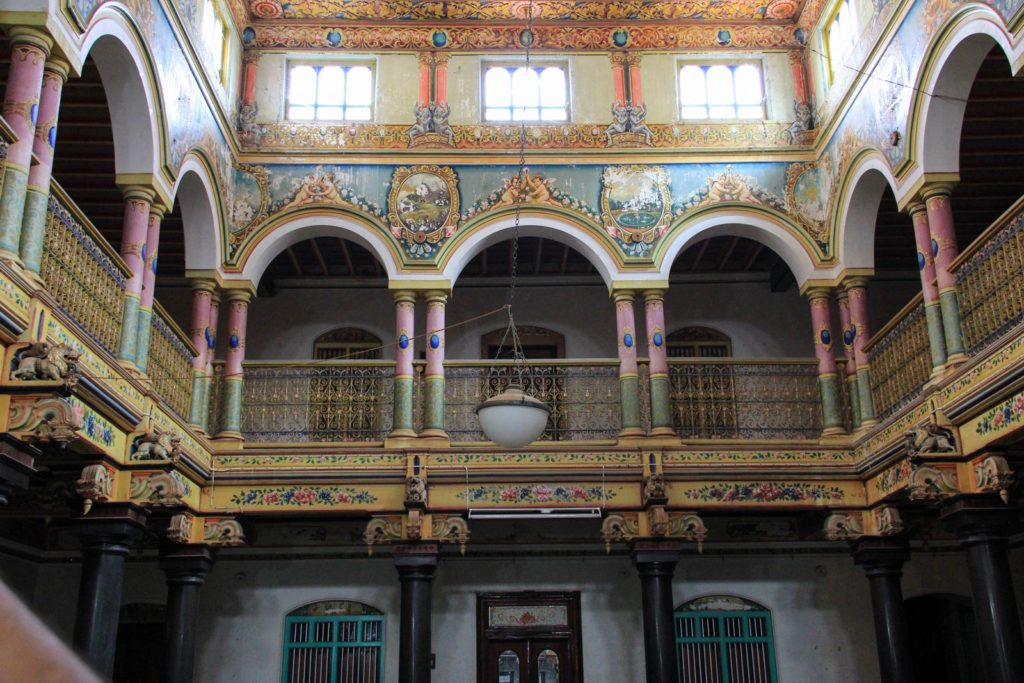
Ceiling in Laxmi House
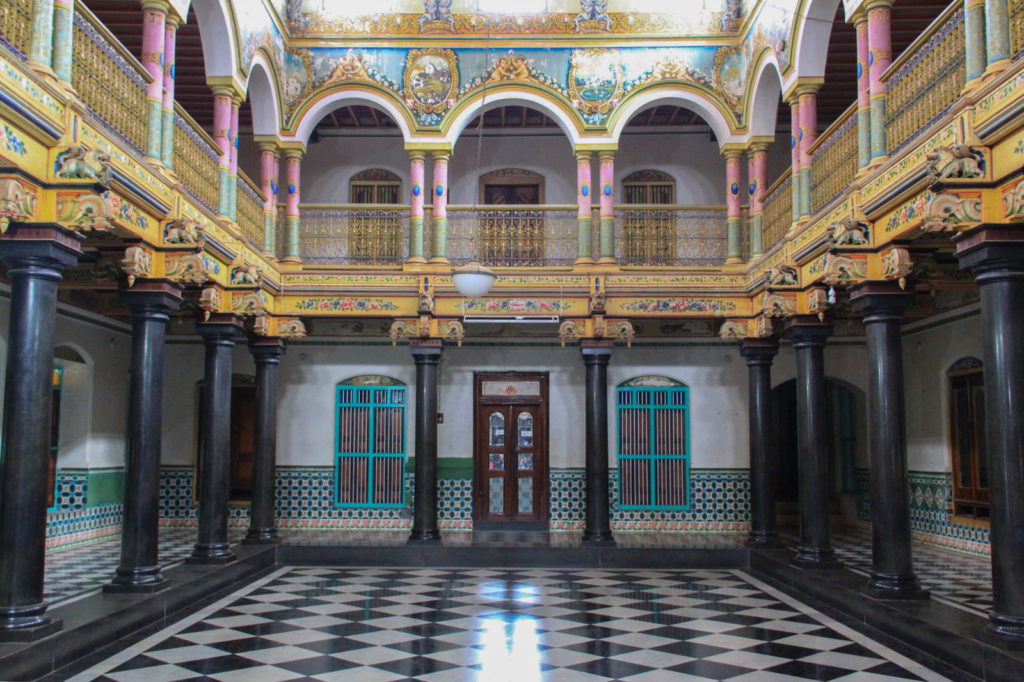
Main Hall in Laxmi House
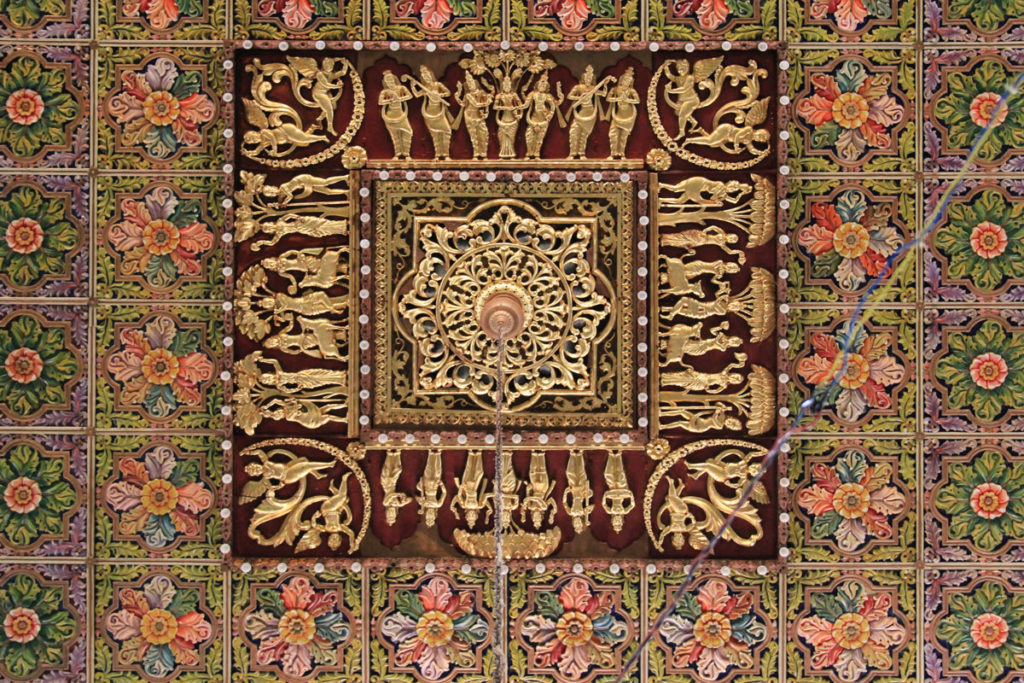
When satin-smooth eggshell plaster, painted limestone, Athangudi tiles, Burma teak, Italian marble, Venetian glass, Belgian mirrors, and Ivory come together with the skill of local craftsmen in a mash of Neoclassical, Victorian, Art Deco and Anglo-Indian styles a unique mismatched harmony comes to light. While the generous selection of styles and materials creates a beautiful kaleidoscope, a closer look reveals subtle shortcomings of such a grand undertaking. You will see in some places that patterns do not continue, borders do not align and corners do not meet.
The Chettiar is a community of elite bankers of the past. They began as merchants trading in South East Asia for the Chola kingdom as early as the 10th century. After several hundred years of being in the trade, the Chettiar evolved into middlemen between imperial bankers and local traders and farmers. Their maritime trade stretched out to Burma, Ceylon, Malaysia, Indonesia and beyond. The Chettiar traders reached their prime in the period between the 18th century to India’s Independence. During this time, they often bartered their surplus goods in exchange for unique materials. They collected these as souvenirs from the exotic cultures they traded with which they brought back along with stylistic inspiration to decorate their lavish homes. Pious and philanthropic with a very rich cultural heritage, the Chettiar have also built and maintained temples, schools, and financial institutions with commitment.
Hundreds of handcrafteded windows that line the inner hallways of the Laxmi house carefully document the Chettiar way of life through scenes painted in the friezes. The children of the family would learn about epics, religion, family values, traditions and culture from the elders with the help of these paintings like illustrations in a story book. Each window is unique – different in style and dimension. In a world obsessed with efficiency and standardization, it’s a bit difficult to comprehend the logic that might have gone behind this choice.
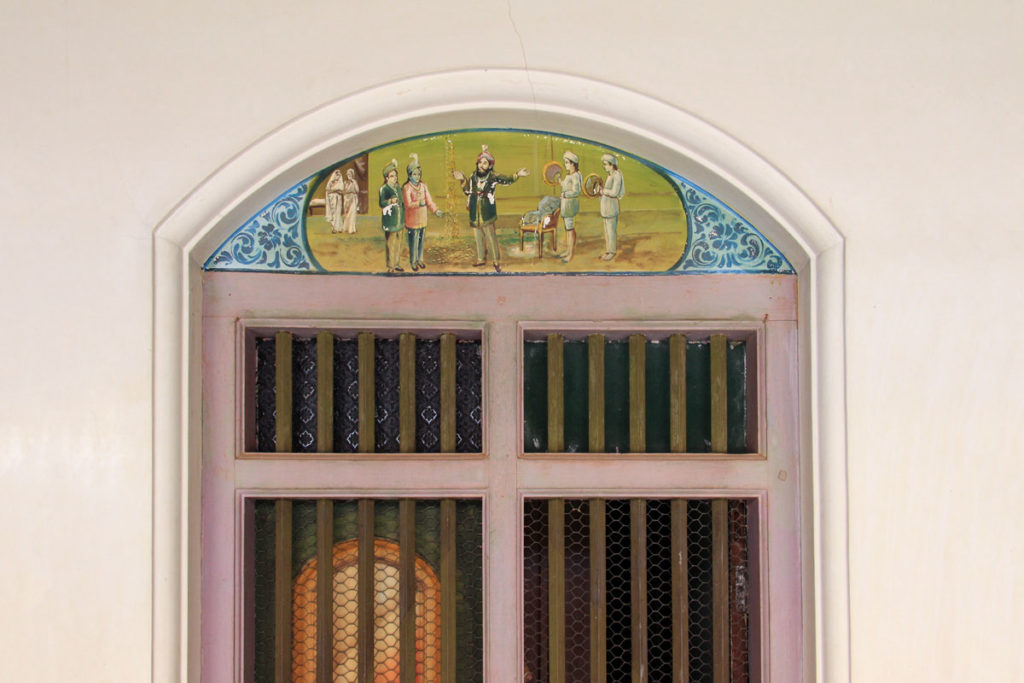
Laxmi house – Window detail. Stories of the family’s patriarch are illustrated into the window friezes.
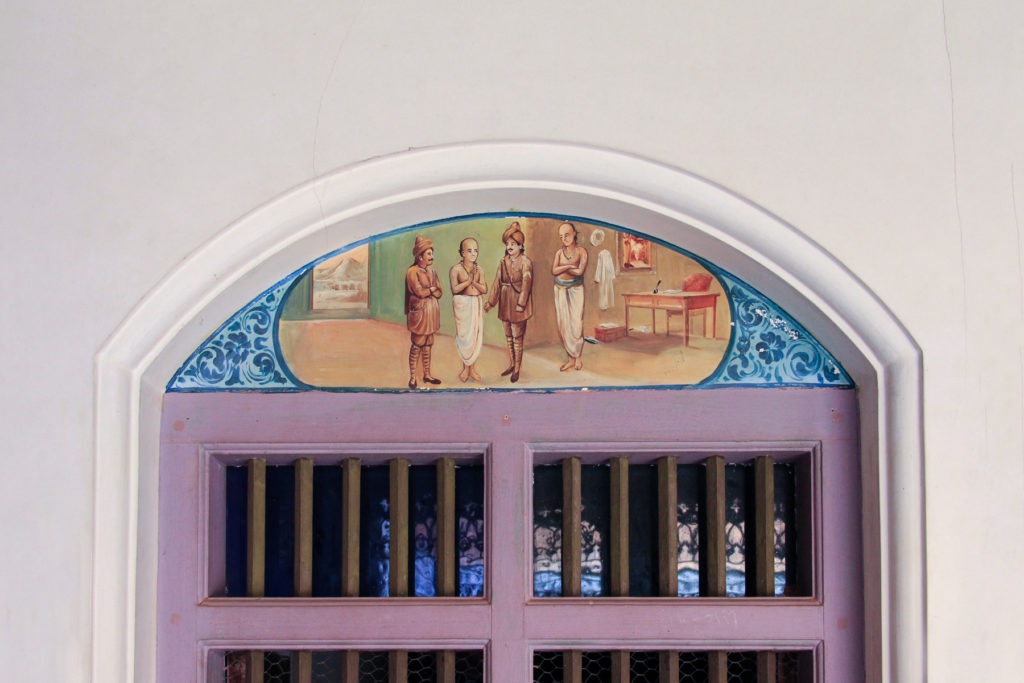
Laxmi house – Window detail. A Chettiar welcoming men from the British Raj
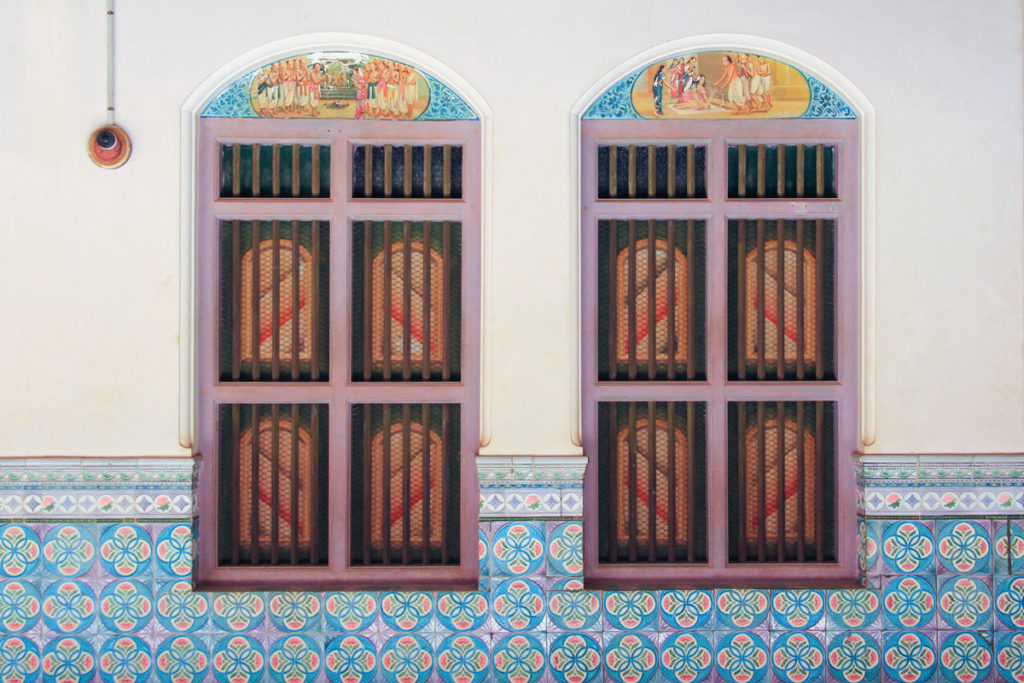
Scenes documenting family celebrations.
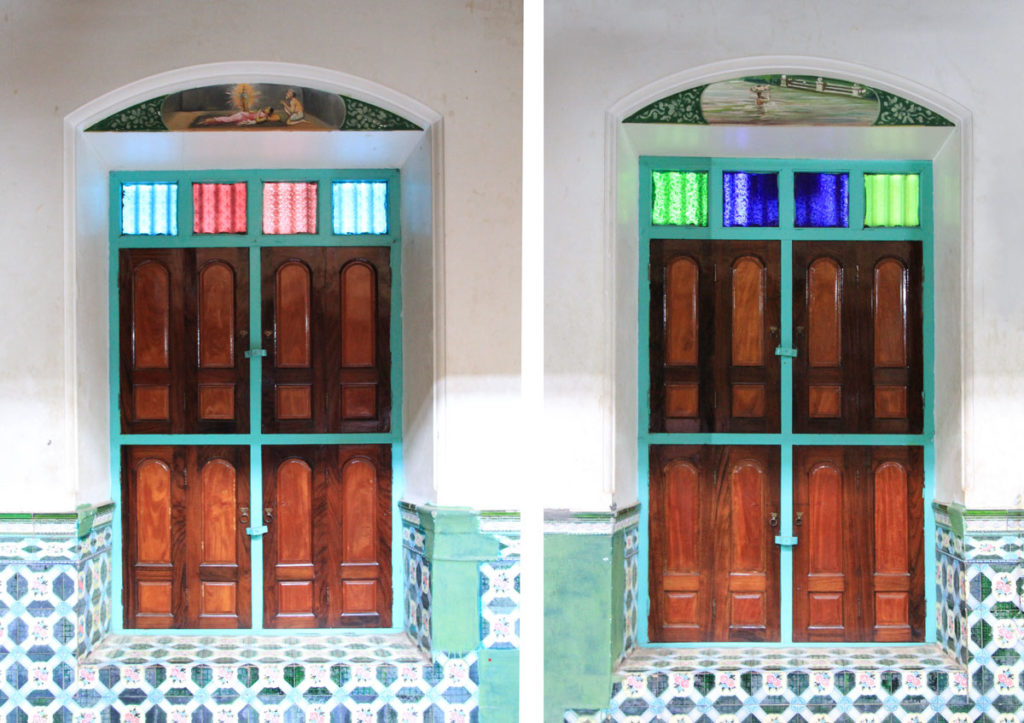
Scenes from the epics. Birth of lord Krishna and Vasudev’s trial as he crosses the curdling Yamuna river carry baby Krishna to safety.
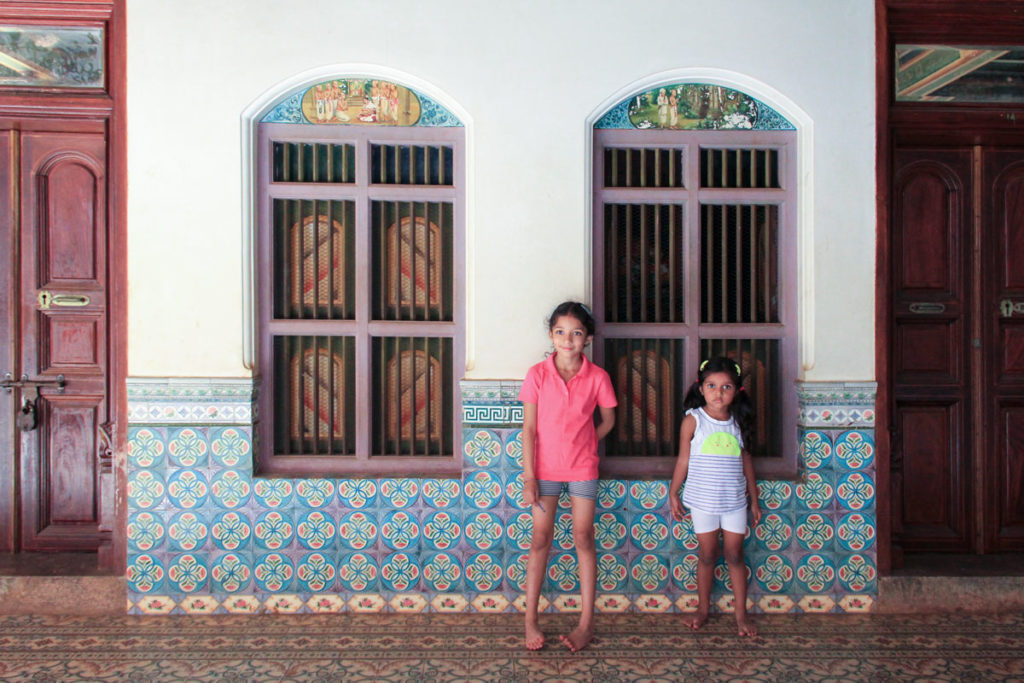
Laxmi House Chettiar Mansion – Illustrated windows
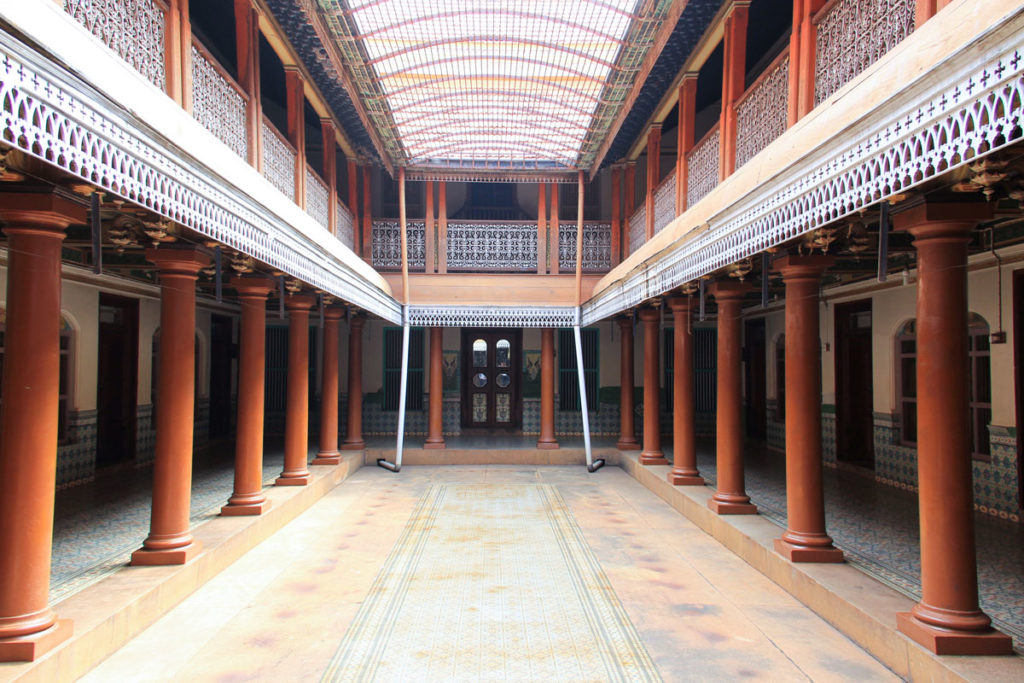
Laxmi house – Athangudi, Inner courtyard
You cannot deny that amidst the time tarnished opulence of this place, there is an air of sadness. As I saw our 2 daughters running through the hallways and skipping on the checkered tiles, their voices filled the emptiness. I quickly realized the missing human element. This mansion, home to a large joint family, was once bustling with the noise of children. The gossip of women reached every decorated corner and bounced back. The rectangular courtyards were once fragrant with the sharp aroma of chilies and poppadum drying in the mid-day sun. The pillar-lined halls that once hosted important meet-n-greet events for the prominent men of the society now lay still.
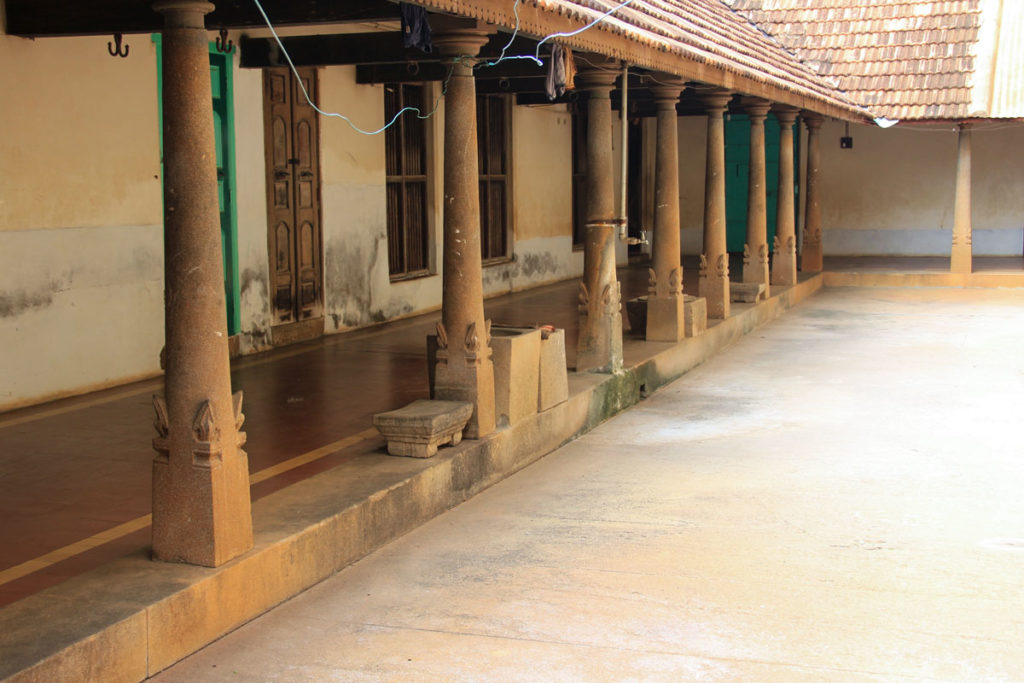
Laxmi house – Atahangudi, a still kitchen courtyard with now unused grinding platforms.
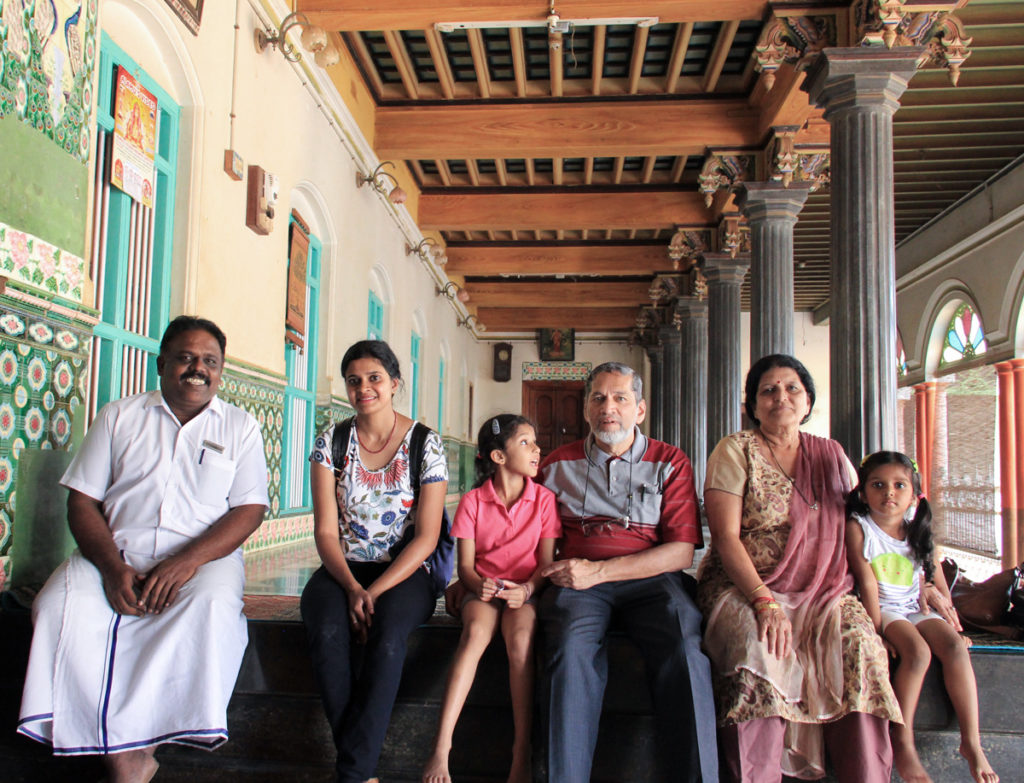
A visit to the mansions with Ramu is a must. He is also smoothly handles guest relations at Visalam (CGH Earth) and is a familiar face in the area.
As aspirations have changed, the next generations of the Chettiars have chosen modern comforts over these lavish yet outdated homes. Since India’s independence, the Chettinad region has seen a steady stream of migration to cities and foreign countries. The owners have left their family homes with caretakers who now occupy the back of the house. Many Chettiars continue to hold places of prominence and influence in modern India. But several family have lost the fortunes and the days of glory were clearly in the past.
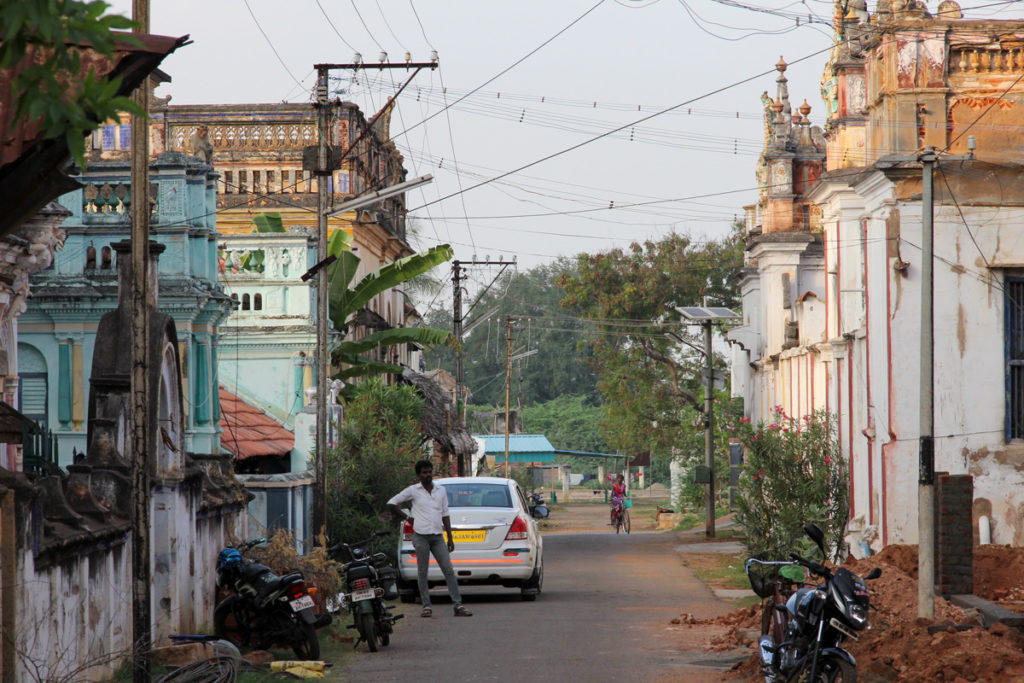
A typical street in Karaikudi with old Chettiar mansions on both sides. Can you spot the monkey sitting on top of the blueish building?
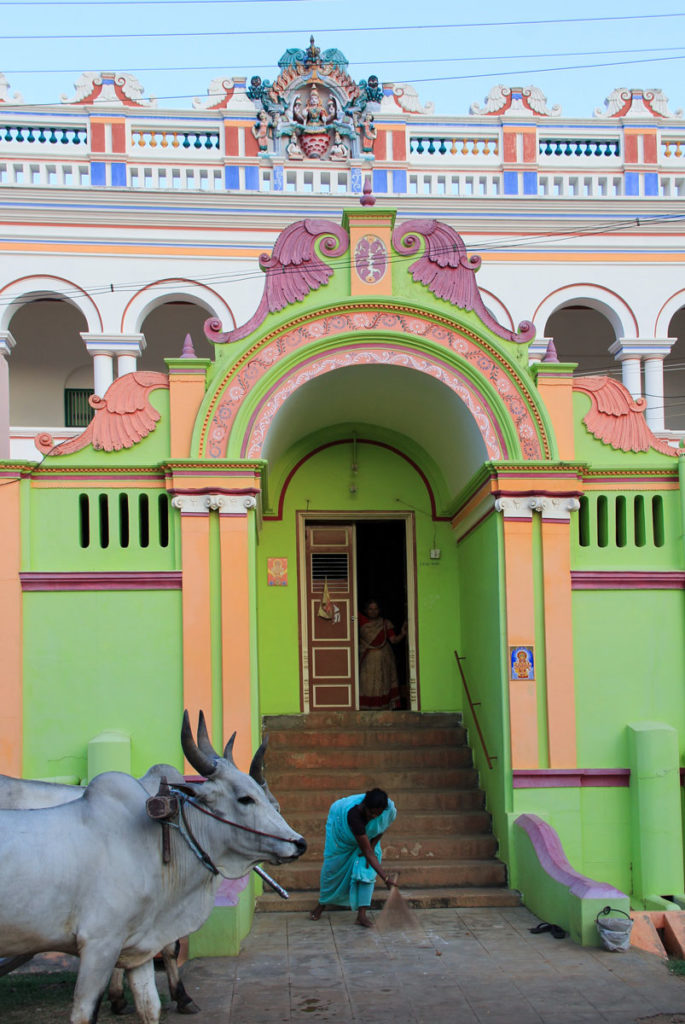
Kanadukathan – A colorful entrance to a maintained mansion.
For over 3000 mansions both time and tide have shifted. Some fortunate ones have received a second lease of life as heritage hotels or like the Laxmi House, are rented out as sets for popular movies. Some mansions are well maintained in spite of being unused and unoccupied. Every year Pongal brings some families back to celebrate the festival. An occasional wedding ceremony may bring some other families home.
Still, a large number of the not-so-lucky mansions remain waiting. An occasional visitor pays a meager Rs.50 and has the creaky doors opened to see the magnificence through gathering gossamer. And for some homes, it is not even that! Demolition or restoration alone can release these anxious homes from the shackles of age.
![]()



